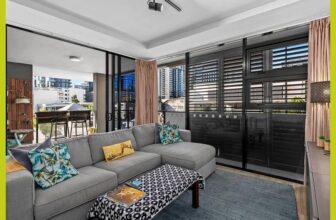
Context: Why dual-income properties
Dual-income strategies reduce volatility by spreading rent across multiple leases or dwellings. For rooming houses, cash flow often remains stable because tenant demand is tied to proximity to jobs, study hubs, hospitals and transport. Selecting the right suburb matters more than cosmetic upgrades. Focus on legal compliance, local demand signals and the depth of the tenant pool. Gain a competitive edge in the market with tailored advice from our rooming house expert!
Rules and regulations to check first
Start by confirming zoning that allows rooming or class 1b use, minimum room sizes, fire safety, car parking ratios and accessible bathroom requirements. Speak with the local planner and a building certifier before offering on a site. Compliance drives valuation and insurer confidence and it prevents costly retrofit surprises that can erase projected returns.
Demand drivers that sustain occupancy
Look for suburbs with a durable mix of employment and education: hospital precincts, TAFE and university belts, logistics parks and airports. Walkability to bus and rail cuts vacancy risk. Retail clusters with late trading extend tenant appeal. Review days-on-market trends, vacancy rates and listing volumes to judge competition, not just headline yields from a few recent sales.
Acquisition criteria for stronger cash flow
Target flat blocks with simple services, 600–800 m² land and quiet streets near arterials. Wide frontage simplifies parking and circulation. Existing houses with clear renovation paths limit holding costs. New builds should allow ensuite rooms, shared kitchens and a manager’s store. Budget line items for fire systems, acoustic treatment, landscaping and professional cleaning.
Suburbs that often tick the boxes
University and hospital adjacencies include areas around Logan and Ipswich in Southeast Queensland, middle-ring belts such as Blacktown and Liverpool in Western Sydney, Joondalup and Cannington around Perth and Adelaide’s northern corridors like Salisbury and Elizabeth. In Victoria, consider transport-linked hubs across the City of Casey and Wyndham where population growth is strong and land remains workable. Discover the best rental returns in Australia – visit the website now!
Operational practices that protect yield
Treat the asset like a micro-business. Standardise tenant selection, onboarding and house rules. Offer all-inclusive pricing with utilities, high-speed internet and regular cleaning to reduce churn. Track arrears weekly, schedule maintenance and keep clear records for refinancing. A stable operator reputation lowers leasing time and supports bank confidence at review.
Risk management and exit strategy
Run sensitivity tests on rent, occupancy and interest rates before purchase. Stress the model for two vacant rooms and a three-month re-lease period. Keep a three-month expense buffer for utilities, cleaning and debt service. Plan exits: refinance after stabilisation or sell to another operator. Flexible layouts allow conversion to a standard dwelling if regulations tighten later.
Author Resource:-
Rick Lopez advises people about real estate, property investment, property management and affordable housing schemes.






